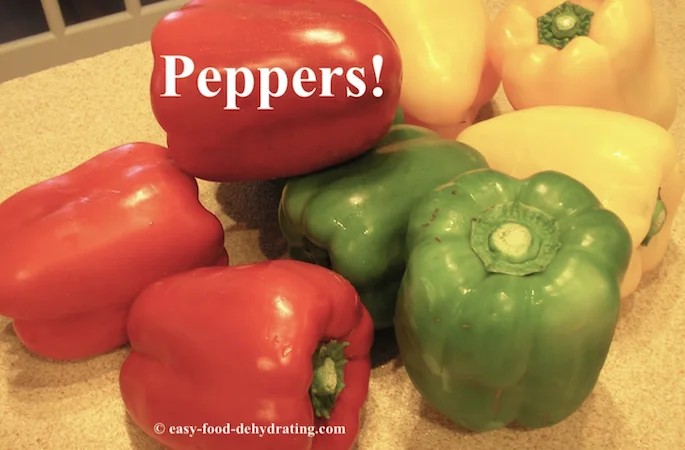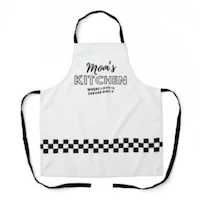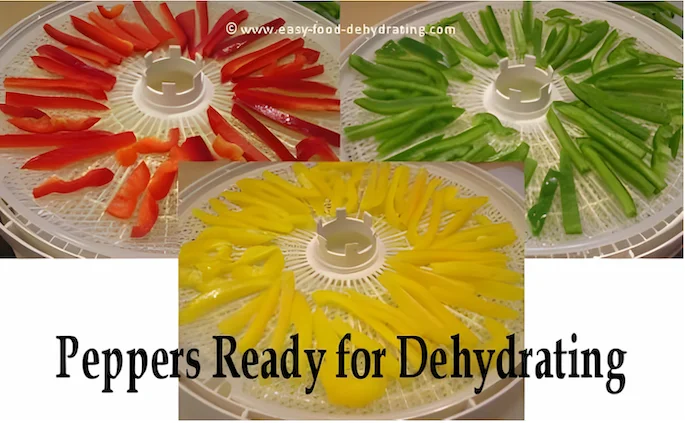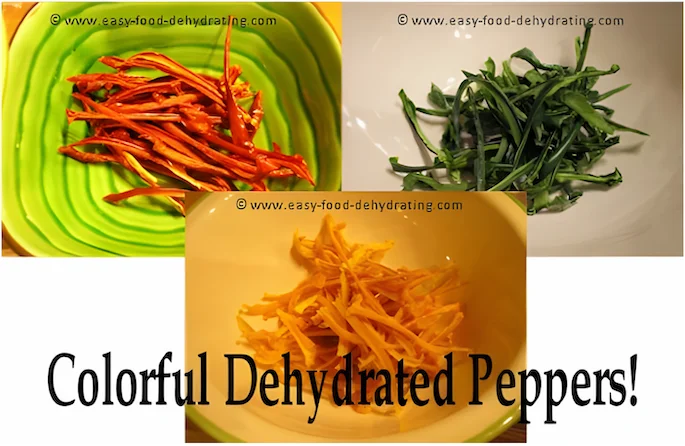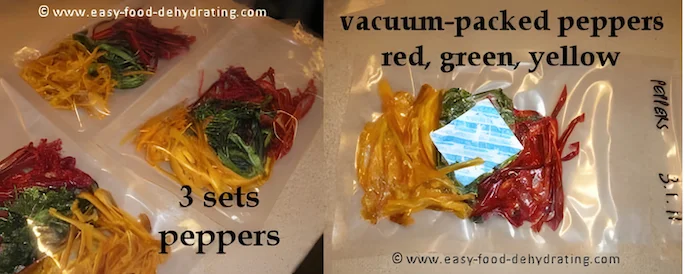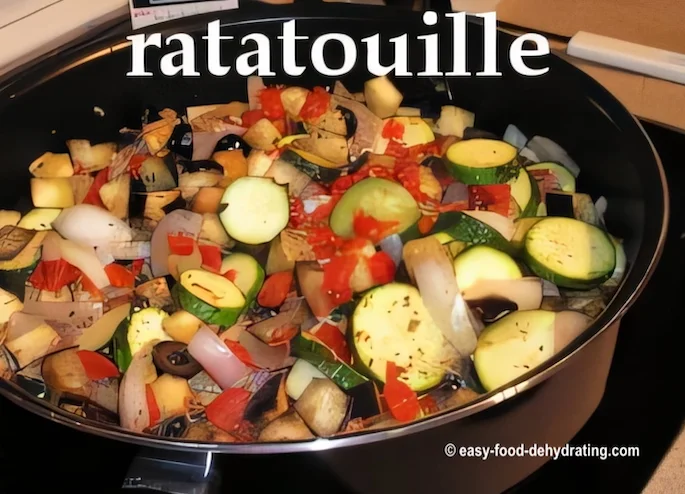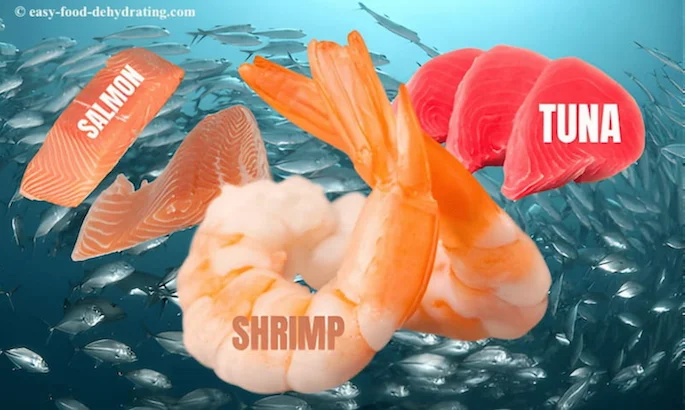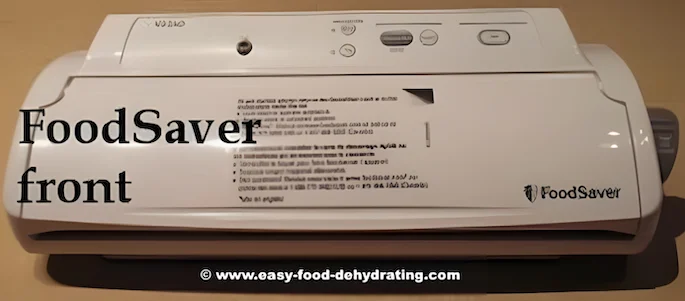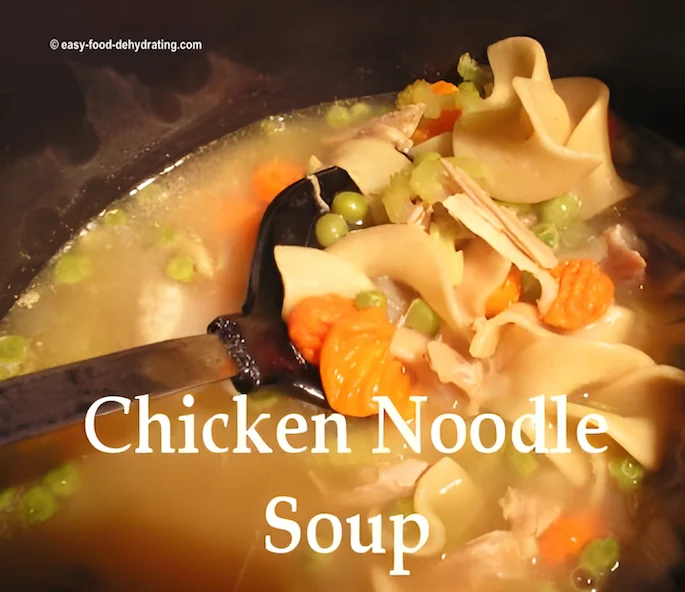whatever the reason or season!
- Home
- How To Dehydrate Vegetables
- How To Dehydrate Peppers Perfectly for Maximum Flavor
How to Dehydrate Peppers
Perfect for Stir-Fry Dishes and Omelets
How to Dehydrate Peppers
Perfect for Stir-Fry Dishes
and Omelets
You're here to learn how to dehydrate peppers - and you'll see just how easy it is. These colorful peppers are great for stir-fries and omelets, just to name a few ways to cook with them.
Want to save on prep time?
Then keep this in mind while you're out shopping: you can use frozen varieties too! Keep a lookout for BOGO "buy one / get one" sales.
TOP Frequently Asked Questions:
Top question: How to dry peppers?
Top question: How to dry peppers?
The complete deets are further down the page you're now reading!
Can you dehydrate peppers in oven?
Can you dehydrate peppers in oven?
Yes, you can dehydrate bell peppers and other pepper varieties in a regular oven. Here are some tips for the best results:
Preheat your oven to 170°F (or even lower if possible), and set up multiple oven racks for trays. Line baking sheets with parchment paper.
Wash and seed the peppers. Slice into uniform thin strips, rings, or small pieces. Spread in single layers.
If needed, prop the door open a bit with a wooden spoon handle. (It's a great winter-time job. Summer? Not so much!)
Dehydrate peppers at 170°F (ideally 135°F) for 6-8 hours, checking periodically, until leathery/brittle with no moisture. Rotate trays and flip peppers over halfway for even drying.
You may need an additional 1-3 hours depending on the humidity and oven efficiency. Peppers should be leathery when fully dehydrated.
Turn off the oven and allow peppers to cool completely before storing in airtight bags/jars for 6 months shelf life - or even better: Vacuum seal them.
Monitor heat closely as ovens can run hot. Lower temperature and use multiple racks for best circulation and drying kinetics. Enjoy your crispy dehydrated peppers!
Dry peppers in an air fryer?
Dry peppers in an air fryer?
Yes, you can dehydrate peppers in an air fryer. Follow these steps:
Wash and prep your peppers - for hot peppers, you may want to remove seeds & membranes which hold a lot of the spicy heat. Then slice into uniform 1⁄4-inch thick strips.
Make sure your air fryer basket has a liner or sheet of parchment paper down first to prevent peppers from falling through the basket openings.
Arrange pepper slices/pieces in a single layer in the air fryer basket without overlapping any pieces. You may need to work in batches.
Set your air fryer to the lowest possible temperature setting. If there’s a dedicated dehydrate mode, use that.
Dehydrate peppers for 4-7 hours, shaking the basket gently every 60-90 minutes. Check frequently toward the end. They are done when they are dried out and leather and slightly brittle. Monitor closely to avoid scorching.
Allow peppers to fully cool before storing them inside an airtight container. Better yet, vacuum-seal them pronto!
Dehydrating times will vary based on your model. Enjoy your homemade dried peppers!
Mother's Day Specials!
Bell Pepper Nutrition Info.
VITAMINS: Peppers are not only colorful, but they are a fantastic source of Vitamin A—with the red variety being #1. The Vitamin C leaders are the yellow peppers!
The champion Folate pepper is the red pepper!
All three contain trace amounts of Niacin, vitamin B6, and Pantothenic Acid.
MINERALS: The minerals found in all three types are a good source of Potassium, followed by Phosphorus, Magnesium, and Calcium. There are trace amounts of Iron, Zinc, Manganese, and Copper. Selenium can be found in the red and yellow peppers, and Fluoride only in the green pepper!
Green and red, but not yellow Peppers, contain Omega-3 and Omega-6 fatty acids.
Don't worry: No pop quiz.
For more on peppers and their nutrition, I went to WebMD and discovered their health benefits right here.
Use a Sharp Knife for Easier Prep!
Begin by Using a Good Sharp Knife!
Check out this great chef's knife with a full tang that means the handle and blade "are one" so they can't come apart when we're slicin' and a dicin'.
I know these Cutluxe Chef knives may be a little expensive, but they do last pretty much a lifetime when you maintain their cutting edges.
*As an Amazon Associate, I earn from qualifying purchases with no price increase to you. Read disclosure here.
How to Dehydrate Peppers
Let's get busy learning how to dehydrate peppers!
If using the frozen peppers, ignore step 1.
- Remove the stem and seeds and slice into 1/4" strips.
- Arrange the slices on your food dehydrator trays, making sure they don't overlap.
- Turn on your food dehydrator and set the temperature between 125°F and 135°F (or per your food dehydrator's instructions).
- When fully dehydrated, they will be leathery.
- Drying time: between 4-12 hours.
- Please remember to rotate your trays for even drying.
Before and After Dehydrating Peppers
The pics below are BEFORE—and AFTER—dehydrating!
Why are there Red, Green, and Yellow Bell Peppers?
Bell peppers come in a variety of colors, including red, green, and yellow. The different colors of bell peppers are the result of different ripening times. Green bell peppers are the least ripe, followed by yellow, and then red.
The longer a bell pepper stays on the vine, the sweeter and more flavorful it will become. So, if you're looking for a sweet, mellow flavor, stick with red bell peppers.
If you prefer a more sharp, pungent flavor, go for green bell peppers. And if you like something in between, yellow bell peppers are a good option.
Use Oxygen Absorbers in Vacuum-Sealed Packs of Peppers
It's a lot of fun learning how to dehydrate peppers and getting them all chopped up in 'one go' saves prep time later on.
In my side-by-side photos, you'll see that I have made three separate bags with a combination of yellow, green, and red peppers—perfect for a stir-fry or omelet! Simply re-hydrate! They were originally store-bought three-to-a-pack, and that photo shows nine peppers total, so you can see how much room you can save by dehydrating them!
The blue packet, which is a 100cc oxygen pack, in the photo above, on the right, shows one vacuum-packed bag!
Click on the following links to find out more about oxygen absorbers and their important role in food dehydrating and safe storage, and how to vacuum-seal your dehydrated vegetables for long-term storage.
Try This Delicious Recipe
Ratatouille Fill YOUR Kitchen with a Delightful Mediterranean Aroma!
Try this fantastic dish of onions, peppers, zucchini and squash. It's known as ratatouille. This dish is guaranteed to fill your kitchen with the fantastic aromas of the Mediterranean area.
Try slicing your peppers in different ways: in rings, "fat" slices, or thin slices... and diced!
Add orzo or white rice; the ratatouille recipe shows you how to do just that.
Different Pepper Heats
Different types of peppers can be distinguished by the amount of heat they pack. The Scoville scale is used to measure the heat of peppers, with the hottest peppers falling at the top of the scale.
Some of the world's hottest peppers include the naga viper, ghost pepper, and Carolina reaper. These peppers can pack a serious punch and should be handled (and eaten!) with caution.
For those who enjoy a little bit of heat, however, these peppers can add an exciting new dimension to your cooking. Try incorporating them into your favorite dishes for a spicy twist.
The Scoville Scale Origin
The Scoville scale is a measure of the heat of peppers, with the hottest peppers falling at the top of the scale. The scale is named after its creator, Wilbur Scoville, who developed it in 1912.
The Scoville scale is based on the amount of capsaicin, the compound that gives peppers their heat. The hotter the pepper, the more capsaicin it contains.
Do Dehydrated Peppers Have a Stronger Taste?
Dehydrated peppers generally have a more intense flavor than fresh peppers. This is because the dehydration process concentrates the flavors of the pepper.
Dehydrated peppers can be a great way to add a bold, spicy flavor to your dishes. Try using them in sauces, soups, or spice rubs for an extra kick of flavor.
Thanks for stopping by to learn how to dehydrate peppers!
